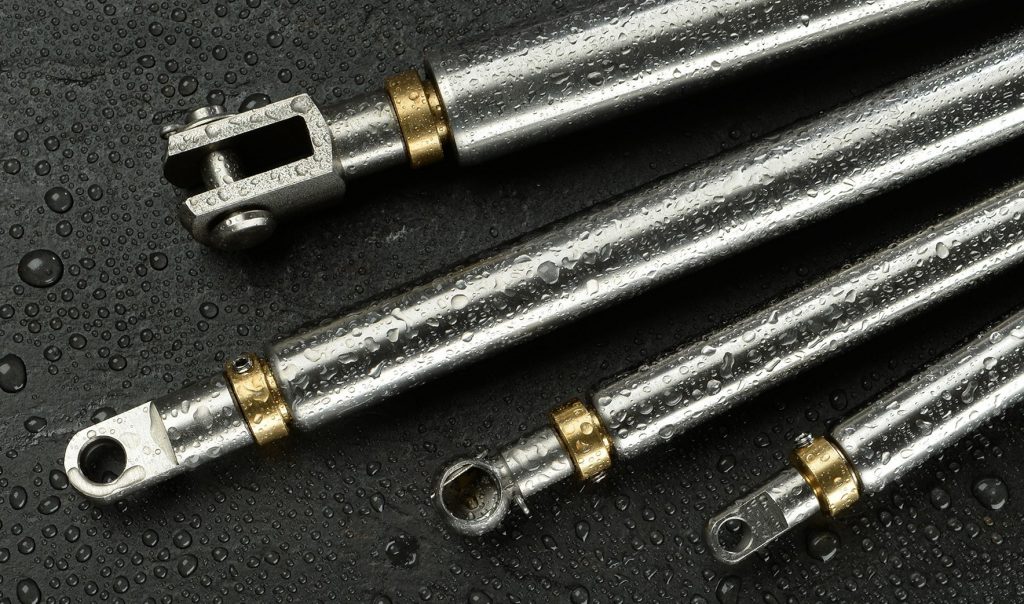You might not know it yet, but gas struts are everywhere. If you’re looking for a smooth lifting motion to help you open a door, hatch, window or anything else, it’s almost a certainty that there’ll be gas struts involved in the operation. So whether you’re an engineer looking to stock up on an essential item, or you’re simply a home owner looking to replace a broken strut, it might be better to purchase your struts sooner rather than later.
The issue is, naturally, that if you’re not a professional or you don’t necessarily know what you’re looking for, it could be a struggle to find the right gas strut for the job. In fact, even if you’ve been fitting gas struts for years, it could still be a challenge to make the right decision about which ones you need. So, with that in mind, we’ve put together this short guide to how to make sure you order the right one. Hopefully, by the time you’ve finished reading this you should be able to know the right gas strut from the wrong one, and be confident in ordering one.
What Are Gas Struts?
If you’re not an industry expert you might not be aware of what gas struts actually are. You might not realise, in fact, that gas struts are so ubiquitous. Gas struts are used to open windows, hatches and doors that require a smooth opening and closing action. The reason they’re so useful is that they are hydraulic, meaning they rely solely on pressure to operate, and this guarantees that you’ll have a smooth opening and closing motion. So now you’re familiar with what gas struts are and why they’re useful, how can you find the right one?
The Selection Process
Different gas struts are useful for different things. Some are longer than others and some are capable of lifting more than others. This means that there is a small set of criteria that you need to look out for when you’re selecting the perfect gas strut for the job.
Fixed Force
Find an exact match for your old ones and easily switch them over thanks to the numerous fixed force gas struts for sale. From small 6mm rods to 14mm versions for more powerful purposes, options for all sorts of functions can be found. Custom sized gas struts can be ordered as well as re-filling old ones.
Stainless Steel
Stainless gas struts are ideal for sterile or corrosive environments such as medical or marine applications. Match your existing gas strut and have it delivered next day. 2 years warranty on all of our replacement gas struts. They are ideal for the food industry as they can be washed without risk of corrosion.
Adjustable
Perfect for when the force is unknown, one-off jobs & prototypes. Adjustable force gas struts come pre-set to the maximum force the gas strut is rated to. There is a release valve at the end of the strut which allows gas to be vented out of the strut, lowering it's force. This allows fine tuning while the gas strut is still mounted.
Regardless of your project, you don’t have to worry about finding the right strut. So long as you know what you’re looking for, you should be confident that we have it; if we don’t have the specific strut you need, get in touch and we should be able to design one for you.
Narrowing Down The Right Strut
Once you’ve decided that you’re going to replace your old gas strut, there are some simple steps you can follow to locate a replacement. One straightforward method you can use is to find out the rod diameter of your existing gas strut and to use our selection of diameter-sorted categories to find the right strut for the job.
The Benefits of Our Struts
Although you might think that all struts are the same, you’d be mistaken. Unfortunately, depending on where the struts are produced, you can find that the quality of the item you buy isn’t as good as what you thought it would be. Thankfully, we’re happy to inform you that all of our struts are produced and manufactured in the UK and are shipped quickly and directly to your door following purchase. This means you can guarantee the quality of our struts.
Our Broad Range of Applications
Free Gas Strut Design Service
Ultimately, you should feel confident that if you’re looking for a gas strut for whatever reason, we have what you need. Do you have a panel or flap that requires a controlled motion to open and close? Well, you’re in luck. Here at SGS, we offer a free gas strut design service to help you fit virtually any application. There are hundreds of possible uses and strut designs, but some of the more common applications are for Cellar hatches, Toy boxes and Machine guards. Our unique design service can help develop custom gas springs to make sure that you have the right gas spring design to suit your application.








